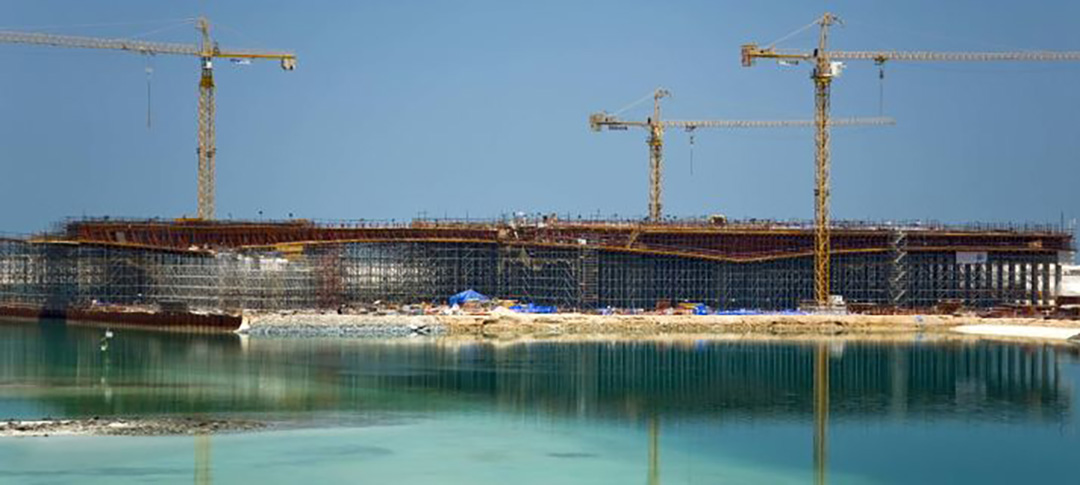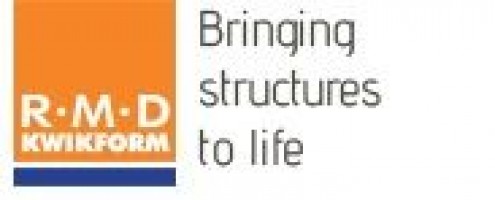RMD Kwikform partner with Taisei Corporation (Abu Dhabi) for the construction of 10 structures along the route of the Shahama to Saadiyat Island Freeway. An essential link from mainland Abu Dhabi to Yas Island - the site of the planned new Formula One Grand Prix track and Ferrari World in the Emirates.
Darren Ellwood, General Manager for RMD Kwikform UAE comments:
"This was one of the first civil infrastructure projects to be started on Yas Island to give people access to the Formula One Track. We have enjoyed a strong partnership with the contractor, Taisei Abu Dhabi, and were able to keep up with the schedule for what was a very demanding contract. Our involvement with the new freeway has acted as a springboard, the base from which we have grown the business here in Abu Dhabi."
RMD Kwikform partnered with the Taisei Corporation (Abu Dhabi) on the vast project that involved the erection of seven box cell bridges as well as three extensive culverts. With rapid completion imperative for the essential transportation scheme, and with major waterways temporarily diverted to facilitate the erection process, RMD Kwikform has had to provide intelligently designed formwork systems together with a number of specially fabricated steel shutters to keep the contract on programme.
Five of the seven bridges, including the 250 metre long, parallel BC7 and BC8, were erected using Rapidshor, along with GTX beams. This shoring structure and the accompanying RMD Kwikform Rapidshor stair-towers for safe personnel access are all being supported off the infill where the river/canal bed had been temporarily raised.
"The external webs to the bridge box cells were built up first – forming a slab and side walls – with the Rapidshor and GTX beams being used to cast the deck element. Then the side walls and central walls were assembled using Superslim Soldiers and GTX beams. Finally for the top slab to the boxes Kwikstage was supplied, again with GTX beams."
The RMD Kwikform formwork had to continue to carry the dead loads of the reinforced concrete, plus all the construction equipment and manpower until the mix gained sufficient strength for the specialist sub-contractor, VSL to carry out the post-tensioned pre-stressing of all the cables that run within ducts in the box walls. The decks to both BC7 and BC8 were built with a 1:40 super-elevations to respect the curve of the road-line, meaning that the box cells vary in depth up to a maximum of 4500mm. Each of the two bridges carries six lanes of traffic in opposite directions, while a further structure between them supports the two tracks of Abu Dhabi’s new rapid transit system.
Prior to the deck construction beginning, RMD Kwikform supplied Alform and Superslim Soldiers to cast the vertical walls of the bridge piers. These rise some nine metres between ground level and the pier-heads where the bridge bearing plates are inserted. They also display bull-nosed vertical edges with a 900mm radius which RMD Kwikform’s designers and special fabrication unit produced bespoke steel shutters which were being re-used along the contract.Such are the demands of the timetable, however, that the Taisei Corporation purchased a staggering 60,000 cubic metres of Rapidshor for the contract. The formwork specialist also provided some initial training of the contractor’s operatives, as well as continuing site supervision throughout the duration of the project.
The last two bridges for the freeway additionally made use of RMD Kwikform’s Paraslim modular cantilever formwork system to enable the in-situ concrete element of the composite decks to be cast up to one metre cantilever beyond the line of the precast beams that spanned between each abutment and the pier-head. The hanging soffit support system can be built up in modules of six metres and then craned into position without relying on staging rising from ground level.
Health and Safety issues were strongly emphasized throughout the pre-planning and contract phases of the project with RMD Kwikform ensuring all outside perimeter edges to the Rapidshor platforms are fitted with double handrails, while netting has been suspended beneath the primary and secondary beam lattice.
The first deliveries to Taisei on the site began in December of 2007, with the majority of the bridges completed by March 2009. The longer, BC7 and BC8 bridges were structurally completed by March 2009.
Philippines




